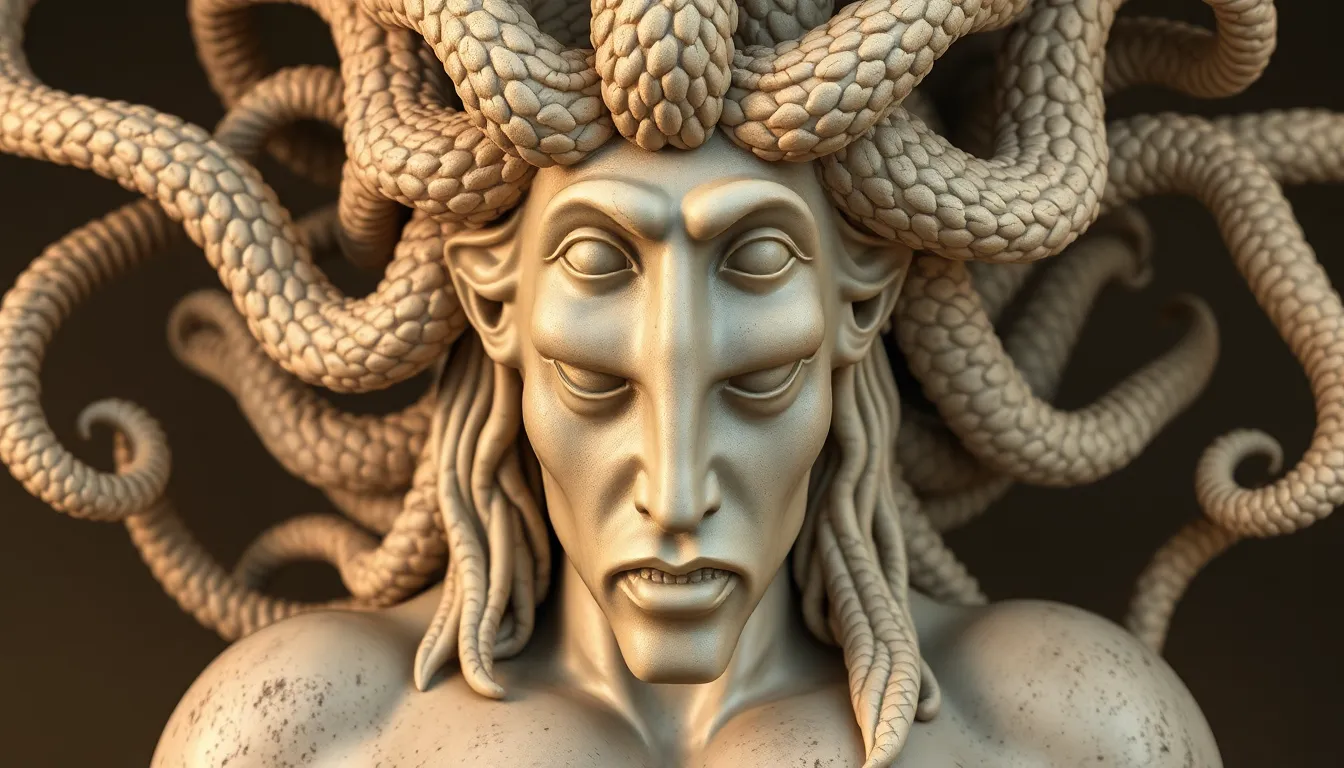Medusa as a Muse: The Influence of Gorgons on Artists
I. Introduction
Medusa, one of the most iconic figures in Greek mythology, is often depicted as a terrifying Gorgon with snakes for hair and a gaze that turns people to stone. She embodies both beauty and horror, and her story has captivated artists and audiences for centuries. The significance of Medusa extends beyond her mythological origins; she has become a powerful symbol in art and culture, representing a range of themes from femininity to power.
This article aims to explore the influence of Gorgons, particularly Medusa, on artists throughout history. We will delve into her mythological roots, examine her depictions in ancient and contemporary art, and analyze the evolving interpretations of her character.
II. The Mythological Origins of Medusa
Medusa’s story begins with her transformation from a beautiful maiden to a Gorgon, a punishment from the goddess Athena. According to myth, Medusa was originally a priestess in Athena’s temple, but after being violated by Poseidon, she was cursed, resulting in her monstrous form.
The symbolism of Gorgons in ancient mythology often represented the duality of beauty and terror. Gorgons were seen as protectors of sacred spaces, but they also embodied the dangers of unchecked desire and the consequences of divine wrath. Medusa’s role in the myth of Perseus further emphasizes her complexity; she is both a victim and a monster, ultimately serving as a pivotal character in his heroic narrative.
III. Medusa in Ancient Art
In ancient art, Medusa was frequently depicted in various forms, from Greek pottery to monumental sculptures. Artists used her image to convey both fear and fascination.
- Depictions in Greek pottery: Medusa often appeared on kraters and amphorae, where her image served as a protective symbol against evil.
- Architectural friezes: Gorgon imagery was commonly used in temples, such as the Temple of Athena in Athens, where the Gorgon’s face was believed to ward off malevolent forces.
- Evolution in classical art: Over time, representations of Medusa evolved from fearsome to more nuanced portrayals, reflecting changing attitudes toward her story.
IV. Medusa as a Symbol of Power and Protection
In ancient cultures, the Gorgon was often seen as a powerful protective symbol. Medusa’s head, in particular, became an apotropaic image, used to ward off evil and bring good fortune.
The duality of beauty and monstrosity in Gorgon imagery highlights the complexities of female representation in art. Medusa’s beauty was once celebrated, but her transformation into a monster reflects societal fears surrounding female power and sexuality.
V. The Renaissance Reimagining of Medusa
The Renaissance marked a revival of classical themes, and Medusa became a focal point for many artists. This period saw a shift in how her character was interpreted.
- Revival of classical themes: Artists sought inspiration from ancient mythology, leading to a renewed interest in Medusa’s story.
- Notable artists: Caravaggio’s dramatic portrayal of Medusa on a canvas and Leonardo da Vinci’s sketches redefined her as a complex figure, embodying both beauty and tragedy.
- Complex femininity: In Renaissance art, Medusa began to be seen as a representation of the complexities of femininity, challenging traditional notions of women in art.
VI. Modern Interpretations of Medusa
In contemporary art, Medusa’s image has been recontextualized, reflecting modern themes such as feminism and identity. Artists today draw upon her myth to explore deeper societal issues.
- Contemporary artists: Many modern artists use Medusa’s narrative to address themes of empowerment and victimization, challenging patriarchal interpretations of her story.
- Feminist reinterpretation: Feminist artists have reclaimed Medusa as a symbol of female rage and resilience, transforming her from a monster into a figure of strength.
- Popularity in media: Medusa continues to appear in popular culture, from films to literature, often reimagined as a complex character rather than a mere antagonist.
VII. The Psychological and Emotional Resonance of Medusa
Medusa’s story resonates on a psychological level, representing trauma, rage, and the consequences of victimization. Her transformation into a monster can be seen as a metaphor for the internal struggles faced by those who have experienced trauma.
- Representation of trauma: Medusa’s narrative has become a powerful symbol for those grappling with their own experiences of violence and violation.
- Psychological implications: The Gorgon myth highlights the complexities of the human psyche, illustrating how trauma can lead to a monstrous transformation.
- Artists’ connections: Many artists find personal resonance in Medusa’s story, using her image to express their own struggles and emotions.
VIII. Conclusion
Medusa’s lasting impact on art and culture is a testament to her complexity as a character. From ancient myth to contemporary reinterpretations, she embodies themes of power, trauma, and femininity that continue to resonate with artists and audiences alike.
As interpretations of Gorgons evolve in contemporary society, there remains a rich territory for artistic exploration. Future directions may include deeper psychological studies of Medusa’s character, as well as further feminist interpretations that redefine her legacy in modern culture.




